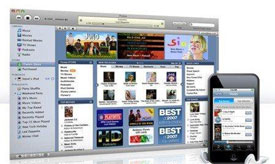
During the last 12 years of the digital revolution, the music industry has mostly mimicked an ostrich. Record labels have tried to pretend that the digital realm is nothing more than a virtual Wal-Mart superstore. And how’s that been working? Not too well according to the International Federation of the Phonographic Industry (IFPI) which estimates that 19 out of 20 downloads worldwide are unpaid. Ouch! Experts have pronounced the album format to be in serious jeopardy. Single song download growth has flattened. Publishing revenue, especially mechanicals, has shrunk. Companies are reacting by cutting costs and headcount. Are we ready to try something new?
 If so, the solution may be asking consumers to pay on the way into the digital store, not on the way out. Unlike a brick and mortar Wal-Mart, experience has proven it is impossible to lockup online merchandise at night. Sound like a good plan? It is, but to get it done the industry will have to band together. Here’s some of the basic steps…
If so, the solution may be asking consumers to pay on the way into the digital store, not on the way out. Unlike a brick and mortar Wal-Mart, experience has proven it is impossible to lockup online merchandise at night. Sound like a good plan? It is, but to get it done the industry will have to band together. Here’s some of the basic steps…
To enter the “store” everyone will pay a mandatory copyright access fee to their Internet Service Provider (ISP), the company that connects them online. The ISP is the logical toll booth for this fee (someday it might also compensate film and book rights holders). ISPs will be glad to collect these fees since they will receive a small percentage to compensate them for time and trouble. In return, consumers get an all-you-can-eat musical buffet. Enjoying the online music will feel like free, but it is not, because everyone paid on the way into the store. And with a compulsory license, piracy disappears, because you can’t steal what you have already paid for.
Publishers, artists, labels and other copyright stakeholders will have to sit around a table to decide upon an agreeable percentage split of this newly formed digital access royalty pool. Yes, that will be a bloodbath, but in the end everyone wins with huge added revenues.
For those of you that want to delve deeper, read on.
THE PLAN—Operating Manual
1. All Internet traffic must pass through an ISP (Internet
Service Provider; i.e. Comcast, Verizon, AOL) creating
a natural toll booth or royalty collection point to gather
copyright payments.
2. Under the plan Internet subscribers are required to
pay a monthly “copyright fee” collected by the ISP,
perhaps $6.50/mo. or $78 per year. It would appear
as a line item on the bill. In return users enjoy an
“all-you-can-eat” compulsory license for DRM-free
digital downloads and streaming music.
3. There are approximately 150 million U.S. Internet
subscribers, whose fee payments would create an
annual copyright fund of $11.7 billion. (For perspective,
the entire annual U.S. music industry is less than a
$10 billion industry, retail.) Result—the mandatory
Internet royalty could double industry revenues in its
first year. [Not a bad beginning!]
4. Web sites would be allowed to offer music under the
compulsory license, since the use of that music would
already be paid by Internet users. Music sites would
be required to pay a minimal percentage of gross
revenue to the copyright fund.
5. Blank recordable media would also be subject to a
minimal copyright fee that would contribute to the
copyright fund.
DISTRIBUTING THE CASH
1. Under the plan there is only one digital royalty. The
distinction between performance and/or mechanical
royalties becomes irrelevant in the digital domain.
2. Files will be monitored, surveyed and eventually tagged
with IDs to accurately account for usage, not unlike
the way ASCAP, BMI and SESAC currently determine
payments.
3. Labels, artists, publishers and songwriters will have
to decide, with the help of a mediator, how they will
divide the fund.
THE VISION
1. A compulsory license brings labels and consumers
together to share and introduce new music.
Cumbersome online licensing and clearance
roadblocks are eliminated.
2. Piracy disappears since all Internet users have already
paid—on the way into the store. That is important
considering that estimates of illegal to paid downloads
are currently running about 20 to 1! It also respects
the nature of the Internet, which was designed to
distribute information.
3. Technology to enhance the discovery, appreciation and
sharing of new music is embraced and legal under the
new system. Consumers are encouraged to enjoy music
when they want it and how they want it.
4. Intellectual property owners are fully compensated
for all copyright uses, from the mandatory Internet
royalty fund collected from each user by the ISP.
TROUBLESHOOTING
1. How to get this plan adopted—It will likely need
legislative help to be implemented and consensus
from all copyright stakeholders.
2. What about movies, books and other intellectual
property? Yes, these copyrights will also be ultimately
paid from the fund.
3. Will the fund always be the same price? Probably not.
An increase would make sense as movies and books
are added.
4. I don’t download music why should I pay? Because it
is for the greater good and the benefit of creators
which are a necessary part of our society.
5. What about a bandwidth meter? It’s possible that some
kind of metering approach would more equitably
equate consumer use and cost in the same way that
utilities like water and electricity measure and bill
according to use.

Category: Artist, Featured, Label, Publishing
About the Author
David M. Ross has been covering Nashville's music industry for over 25 years. dross@musicrow.comView Author Profile


